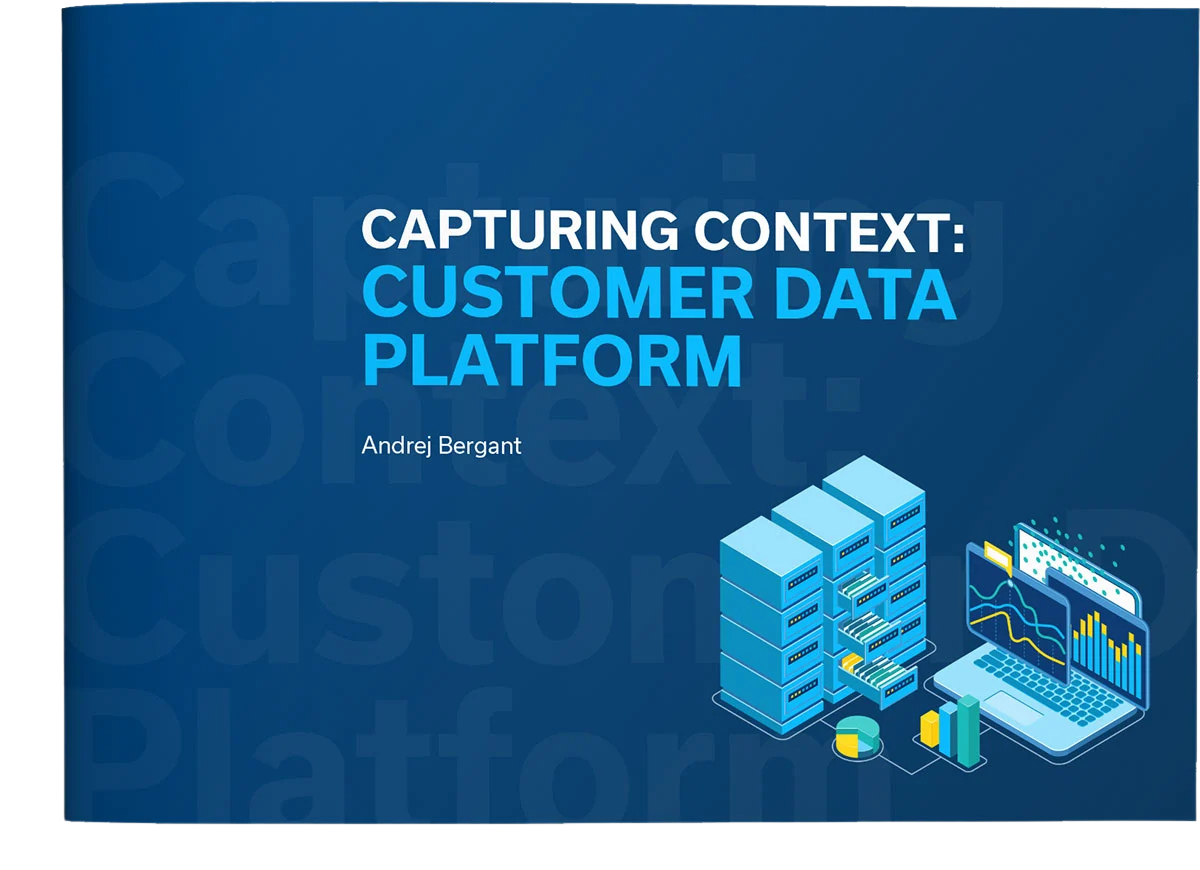Andrej Bergant
Collecting and processing data from different (conditionally compatible) information subsystems is time-consuming and inefficient. An additional problem arises from the possible inconsistency of the content of the data obtained from different sources.
Customer Data Platform (CDP) is designed as a solution to such dilemmas. It allows you to create permanent and unified records of your customers, their data and their characteristics. In other words - their identity. Find out how.
Download the guide

5 key elements of context
Think about how people shop today. The average shopper probably first researches online, checks reviews, compares prices and watches a few videos before making a purchase decision. This means that they are already interacting with you through your website, ads, emails and many other channels before they make first contact.
The best companies in the world are well aware that every interaction counts and are already making sure that every customer contact is more personalised than the last - ads are relevant, websites are tailored to the visitor's current interests, product/service experiences are tailored.
All this can be achieved if you have quality data. This is where Customer Data Platform (CDP) comes in, a data warehouse for all customer data, capable of integrating all the company's IT subsystems, bringing the data together and presenting it in a single, understandable format.

What are the tasks of Customer Data Platform?
CDPs have 3 key tasks:
They integrate and aggregate data from many channels and data sources in different formats; this data can be structured or unstructured, in packets or in a stream.
CDPs offer a Single Customer View and form a kind of "customer DNA". This comprehensive customer profile allows you to actively engage with an individual throughout their entire buying journey.
CDPs give external systems access to all customer insights, so that teams driving the business or managing the customer experience can work with them seamlessly and in parallel.
What is not a Customer Data Platform?
1. No CRM
CRM tools mostly store customer transaction data and have no insight into anonymous customer behaviour - they cannot store information on how, where and when customers move along their purchase journey.
2. No DMP
The DMP does not manage personally identifiable information. They are based on cookies and thus do not create a permanent customer profile. They classify customers into segments and do not allow the use of individual customer data.
3. Ni Marketing Automation
A marketing automation platform can roughly record customer interactions and use them to trigger generalised marketing messages.
Who benefits most from Customer Data Platform?
Management
Use customer insight to drive better results.
Tweak the customer purchase journey and increase your value.
Easily launch new products or enter new markets.
Marketing
Connect the online and offline worlds.
Create audiences and targeted campaigns without relying on other teams.
Show your direct impact on business.
Engineering
Use just one API to collect all your customer data.
Forget time-consuming and redundant work.
Operate with an organised and ready-to-go data set.
Download the free guide "Capturing Context: Customer Data Platform" and respond in real time to your customers' ever-changing demands/needs.